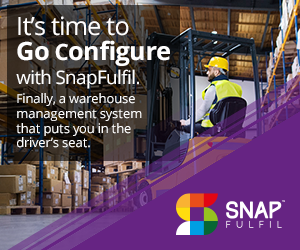More warehouses are choosing best-of-breed over alternatives
With the huge variety of advanced business software available today, it's no wonder organizations are upgrading in droves. The logistics sector is no exception to this, and in fact may be one of the leading industries for new software adoption. According to a recent survey of logistics professionals from DC Velocity, around 30 percent of supply chains have recently upgraded their software, and much of this innovation and growth is beginning in the warehouse.
"Many prefer to adopt a new WMS over other logistics applications."
Respondents also reported a strong preference for warehouse management systems compared to other logistics and supply chain solutions. A full 50 percent of survey respondents said they were using a WMS currently, more than enterprise resource planning or transportation management. This speaks to the utility of a WMS in today's business environment, where a company's success (or failure) depends more than ever on their supply chain operations.
Unfortunately, despite wider adoption of new supply chain technology, many logistics professionals said they were having issues justifying the expense to executives. DC Velocity reported that although 43 percent of survey respondents had seen the return on investment promised to them initially, an equal number said they had neither saved nor lost any money. Another 14 percent told the publication they were certain their supply chain investment did not provide any real return. Most said they expected to see ROI within a year of software adoption, although responses to this question varied wildly from three months to three years.
To build or to buy?
For many logistics professionals, when approaching the problem of an outdated or unworkable WMS, the answer usually centers around choosing from a list of software vendors, or taking on the cost of building a customized application. In an article for Multi Channel Merchant, Curt Barry noted that the debate on whether to build a WMS from scratch, buy an on-premise solution or adopt a best-of-breed application involves asking some essential questions.
 |
| The right business software could be the key to unlocking major growth. |
First, managers or executives will want to know if a commercial system will fit their operations well enough. If this doesn't appear to be the case, the discussion will likely shift to whether or not a "homemade" WMS is worth the investment. Calculating the total cost of ownership for either type of project is notoriously complex, as it involves numerous unknown variables. Ultimately, businesses may feel rushed into a decision that ends up being a regrettable one.
What often gets lost in this conversation, however, is the fact that best-of-breed WMS software can effectively serve both sides of the equation. On one hand, a Tier 1 cloud WMS has the capability to remain adaptable to unique business situations. At the same time, these solutions allow for potentially instant savings thanks to an affordable no-capex payment plan. With these two factors at play in the latest brand of cloud WMS, logistics professionals can truly tap into the best of both worlds.
Making these big decisions is hard, but too many businesses may be overthinking it. With a cloud WMS, logistics professionals don't need to settle anymore.



